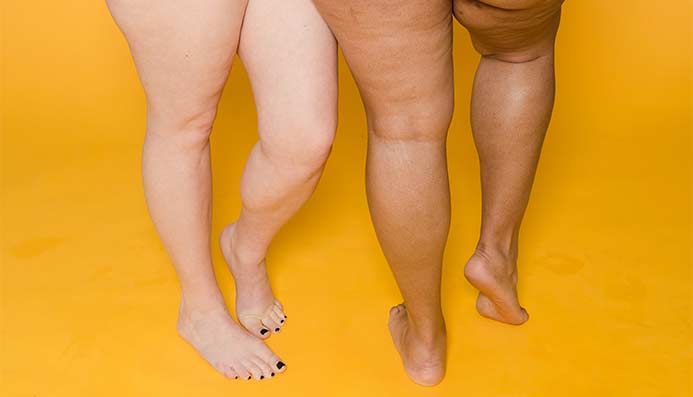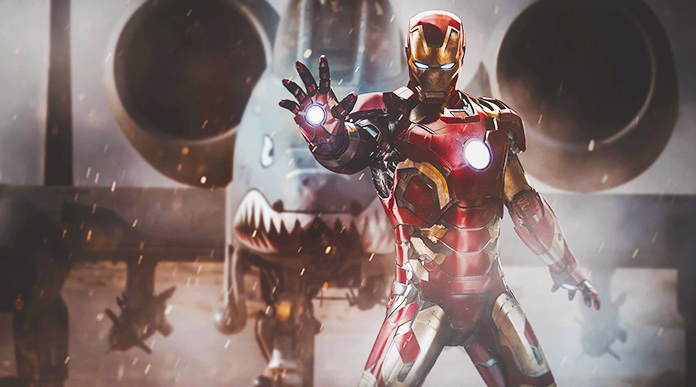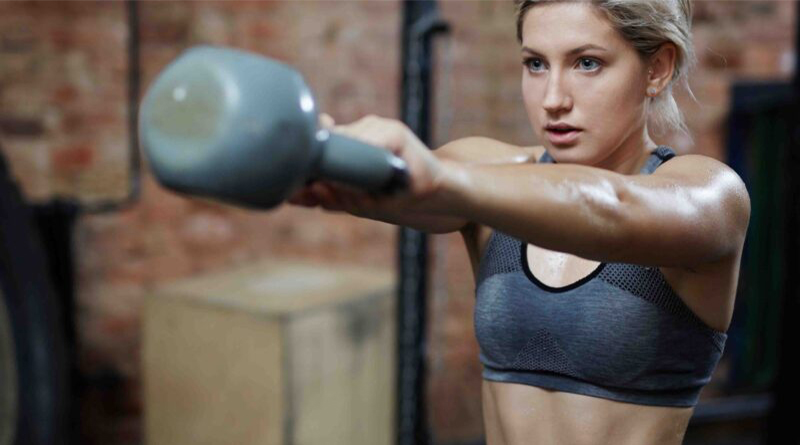When you wear skinny jeans, do you think your calves are bigger or sagging than average? If Yes, then there is a possibility you have fat calves. Generally, if you are overweight, it is quite common to have fat calves, but if you are slim or normal, but have thick calves, it might be an issue.
Let’s dive into, what are fatty calves, what causes them, and the steps to transform your fat calves into muscular calves.
What are fat calves?
“Fat Calves” is when an individual has a below-average amount of muscle combined with an unhealthy amount of fat on the calves.
Keep in mind fatty calves are normal, and almost 80% of people suffer from them in the United States of America.
Sometimes people get confused between ” thick calves” and “fat calves. It’s easier to get confused, as from the first look both these calves look similar.
Fat Calves Examples

These images show a clear representation of the fat calves and muscular calves.
If you look closely at the left side, the soft skin tissue is pretty huge, which is indicating a higher fat distribution.
On the right side, muscles are popping out of the calf, and the skin is slim as compared to the left image. This is considered muscular.
Move forward, to know why you have fatty calves, what health issues they carry, should you bulk or cut down, and lastly the exercise and diet to follow for quick results.
What Causes Fatty Calves?
Genetics
Genetics plays an important role in determining a person’s physique, including the size of the head, neck, shoulder, chest, and also calves size. If you look closely, you can easily notice that your body shape is quite similar to one of your parents.
Also, check your parent’s or your sibling’s calf size – do they also have the same size as yours? The size may vary to a small margin, but the similarities will be there.
Moreover, if you are born with thick calves, it will be nearly impossible to get skinny calves, even if you do exercise to reduce your calve size. But minor changes to calve size will surely be noticed, as this is mostly due to increased muscle mass and loss of fat on calves.
Little to No Strength Training
A person who is not a big fan of working out, or lifting any weights can cause an increase in fat on calves. However, the fat distribution will be throughout the body, but due to genes, some people gain higher fat distribution in calves.
It mainly happens, when a person is not physically active like a job that consists of long hours of sitting, not enough walking, running, etc.
Even if this person is on a constantly balanced diet, the calorie intake will be higher than burning calories. Thus, getting an appropriate leg movement throughout the day is beneficial for the human body.
Eating Too Little Protein
Insufficient protein in the body can also cause, an increase in fat distribution in the body. According to a 2012 study in the Journal of the American Medical Association, people who ate an insufficient protein-rich diet resulted in less weight gain.
However, these people lose muscle mass, and store more than 90 percent of extra fat. Thus, eating too little protein will not cause a weight change, but there will be a higher change in muscle mass and fat percentage in the body.
This extra fat is mainly distributed on the body, including calves which results in fatty calves.
Is fat On Calves Unhealthy?
According to a study conducted on 6,265 people, to investigate the relation between carotid plaques and common carotid artery intima-media thickness with calf circumference (CC).
The study incorporated people of different ages, gender, mass index, and other medical factors, which resulted in finding out the association between calves size on health.
The result of the study shows, that the bigger calves had fewer fatty deposits also referred to as plaques built up in their arteries. This shows that a person will have a lower risk of stenosis, carotid artery disease, and strokes.
The researchers also believe that, when a person has big calves, it is providing the body additional space to store fat and thus decreasing the fat composition in the bloodstream.
However, big or fat calves are good for your health, even though they reduce the risk of strokes.
Instead of thinking of building thick calves, choose to train for stronger calves. Stronger calves will propel you to move forward, reduce ankle issues, and will enhance your control over your body and lower limb: Making you faster in running and for long hours, and jumping higher too.
How to tell if you have fat calves
Fat Calves Test
Unlike belly fat, calves fat can not be easily detected by just a glance. There are two methods which you follow, and learn whether you have fat calves Or muscular calves.
Body Mass Index ( BMI)
To check whether your calves are appearing bigger because of muscle or fat, BMI is the easiest way to know.
If your BMI is showing you in a Healthy category of between ( 18.5 to 24.5). Then, this can give a slight hint of muscular calves. However, if you compare the fat body percentage of your body, the result may vary.
For a pro athlete, the average body percentage is between 14% to 20%. Whereas for a person who works out a few times a week, the fat percentage increases from 21% to 24 %.
So, if you fall in either of these categories, it can be said that you have muscular calves.
However, if you never work out, and are still in a BMI healthy index category. Then, you can have a higher fat body percentage and ultimately higher fat distribution near the calf area.
The flexing test
It is the second method, to know fat calves Or Muscular calves is – the flexing test.
In this method, the person needs to flex his calves.
Steps:
- Stand Straight, chest out, and shoulders rolled back.
- Put both your hands on your waist and look straight.
- Raise heels and maintain a balance of your body on your feet.
- Ask someone to grab the calves.
- The hard part is known as the calves muscles.
- The soft tissue over the calf is fat.
- If they can easily grab a thick skin tissue, then you have fatty calves.
- If Not, then have muscular Calves.
What Should You Do: Bulk or Cut?
When faced with this question, people often get confused, as you can during your calves training.
You can only get rid of fat calves by training with proper exercise and a proper goal in your mind.
While following the calves workout routine, you will have two choices to make:
- Get slim calves
- Gain calves muscle ( bigger and stronger)
So, should you start by bulking or cutting?
Should You Start With A Bulk?
If you choose to bulk up, and gain muscle, you will have these advantages.
- Increase leg strength
- The size will remain the same, and fat will convert into muscle.
For example, Kevin weighs around 160 lbs and had fat calves because his job requires him to sit around 8 hours a day.
Without lack of leg exercise, in his daily life, he gained an immense amount of fat on his thighs, buttocks, and calves. His goal was to convert this fat to muscle, without losing its calves size. In his words” Without this fat, I have chicken legs”. Thus, bulking is a good choice for him.
What happens if you bulk when you have fat calves?
Bulking up is fairly easy even if you have fat calves, the difficult task is to lose the fat and gain the exact amount of muscle.
However, even if you gain muscle and also gain fat, the size of your calves will get bigger, making it look like you have very huge calves.
In Kevin’s case, there is an increase in muscle, but they also gained some fat. This causes the calves to look more fatty. But this can be avoided by training extra hard, to maintain the balance between losing fat and gaining muscle.
Should You Start With A Cut?
If you want slim legs, it’s best to just cut down the fat on your calves. It’s easier to cut as compared to the bulk, as you need enough exercise to lose fat, and not gain muscle.
To gain muscle you need to train harder, but if your goal is to achieve slim, toned legs, then why bother spending additional 20 minutes on a calf workout. Also, most females don’t want their legs to be muscular, so minimal training is enough to lose fat calves.
What happens if you cut when you have fat calves?
During the cutting phase, the person will experience either one of these changes in their calves:
- Lose fat, and size of calves
- Toned shape, and lose fat on calves
In the first scenario, the individual will lose fat due to the calf’s training, and the size of the calves will be reduced.
However, there will be a minimum change in muscle strength, and you will have flat calves. In guys, these are referred to as chicken legs, the calves without muscles”.
In the second scenario, the individual will have slim, toned legs, with additional muscle strength. Most models, actresses, and actors want to achieve these shapes. As there is muscle, no fat, and spectacular calves shape.
Fat Calves Cutting Transformation
These are some transformations, by following a proper cutting calves workout routine. To get this similar body shape, you need to train extra hard, as you have to destroy the fat and gain muscles at the same time.
How To Lose Calf Fat
The only way to get rid of fat calves is to train your calves and feed them calves with appropriate amounts of nutrition.
There is no other way to, get faster results, than these methods. However, choosing a calf exercise is important, as not all calves exercise will help you cut down fat on the calves faster.
So, choose these exercises mentioned below which are tested by experts, and are 100% effective in reducing calves fat.
Exercise To Lose Calf Fat
- Standing Calf Raises
Target: Calves and hamstrings
Sets: 3/4 Sets of 25 Reps
Steps :
- Stand straight with your feet shoulder-width apart, and place your hands on your waist.
- Raise your heels while maintaining the balance on your toes.
- Raise until your calves are not fully flexed.
- Hold the pose for 2 seconds, and go back to the original position slowly.
- Repeat the steps.
- Seated Calf Raises With Weights
Target: Calves
Sets: 3/4 Sets of 25 Reps
Steps:
- Sit on a flat surface like a chair or bench, with your back straight.
- Hold Dumbelllss on both hands, and place them on your thigh, just above the knee.
- Raise your heels to flex calf muscles, and added dumbbells weight should also be lifted without using hand strength.
- Hold this position for 2 seconds, and then lower the heels to the floor.
- Jump Squats
Target: Calves, hamstrings, quads, and glutes
Sets: 3/4 Sets of 25 Reps
Steps:
- Stand straight with your legs shoulder width apart.
- Go in Squat stance: Bending your knees and pushing your buttocks out.
- Jump with your legs’ full thrust, and raise your hands straight.
- Get back to squat stance, then repeat the process.
Diet Plan To Lose Calf Fat
-
Limit Fattening Food
To lose fatty calves, the first step is to put restrictions on your diet, which includes avoiding any junk foods like pizza, burgers, deep-fried chucks, fires, etc.
These are high-calorie foods, with a high amount fat percentage, and one of the top foods which are making people obese.
To lose fat calves, you need to shed pounds from not only your calf area but from the whole body.
-
Consume Slimming Foods
After avoiding fat-rich foods, it is time to choose healthy foods that are going to help lose fat. These are considered slimming foods, and some of the examples are veggies, fruits, grains, nuts, healthy oils, lean protein sources (fish, eggs, lentils, beans), brown sugar (in limited amounts), whole wheat flour, etc.
So, fill your diet plan with these foods, and create a perfect balanced diet, to get rid of that additional fat you are carrying.
Frequently asked questions
How long does it take to transform fat calves into muscular calves?
There is no definite period, it all depends on the workout intensity and diet you have opted for. For instance, higher intensity workout of calves will start showing some results after 4 weeks.
However, following a low-intensity workout regime will take about 6-8 weeks, to show small progress and reduction of fat on calves.
The above-mentioned transformation, I’d performed by a fitness athlete, who was in his bulking phase, and during that period, he gained fat around the calves area.
To lose fatty calves and transform them into muscular calves, a 7-week high intense workout regime was followed including gaining in the calves size.
Can you lose calves fat and gain muscle at the same time?
Yes, it is possible to lose fat and gain muscle in the same period. This requires a high-intensity workout, which will burn calories and also increase muscle mass during the time.
However, even after training for a few weeks, it will be impossible to see results, as you’ll be losing fat at the same speed as you are increasing muscle mass.
Overall, the size of calves will show a slight change, if your speed to lose fat and gain muscle is the same, which is highly unlikely as it requires a high-intensity workout regime.
Will walking help me lose calf fat?
Yes, walking every day will help you lose calf fat. Walking is cardio, and it is considered a mid-level intensity exercise that is used to burn calories.
How can I tone my calves?
There are different training regimes, you follow to tone your calves. The best is to choose any high-intensity exercise like following a HIIT program,
Why are my calves so big?
The calf size depends on several factors, including – genetics, hormones, diet, and environment. If you have big calves, fat calves can be a reason too.










